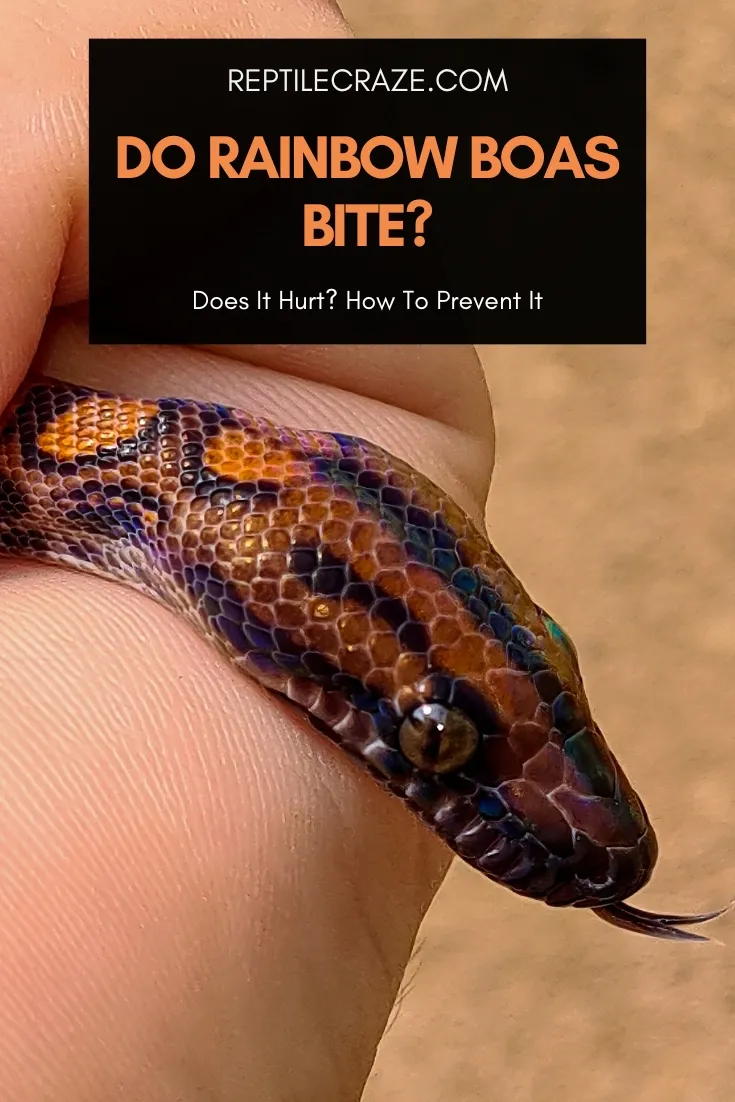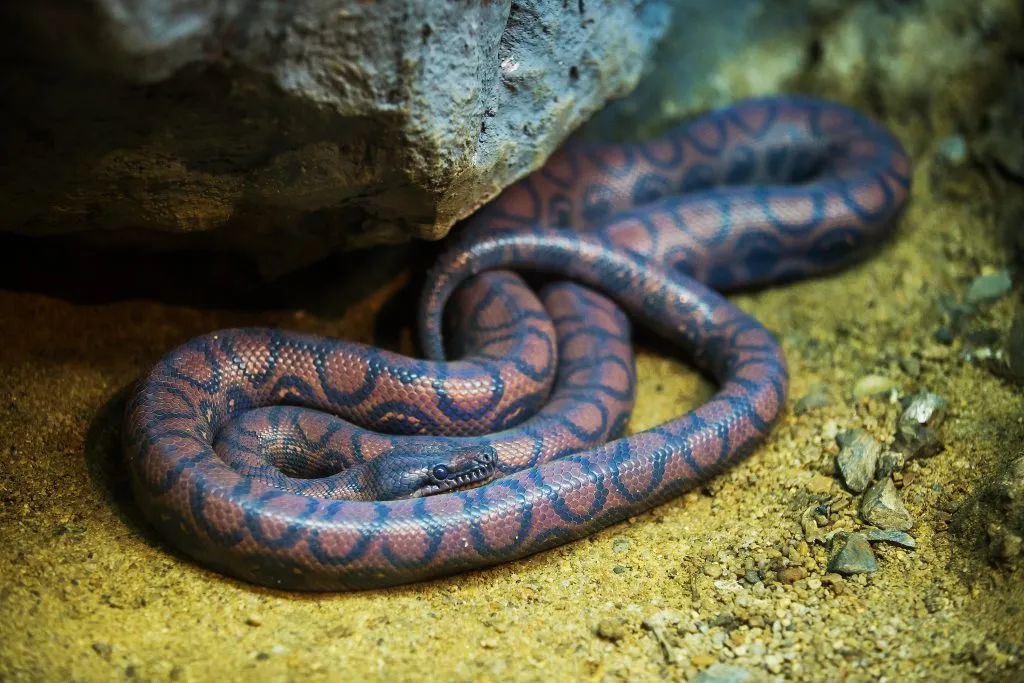
Pet snakes can be a bit more unpredictable than dogs or cats and can be dangerous. The beautiful Rainbow Boa is no exception, and there are risks to owning one. How likely are Rainbow Boas to bite humans and does it hurt?
Rainbow Boas have long hooked teeth, which help them hold their prey before constriction and can give a painful bite. Their teeth must be removed carefully from bite wounds to avoid further damage. Keeping hunger and stress in the rainbow boa at a minimum lowers the risk of being bitten.
The hooked structure of their teeth means a bite most definitely hurts! In this article, we’ll explain some reasons why a Rainbow Boa might bite and how to reduce the chances of being bitten.
Let’s get stuck in!
Table of Contents
Why Do Rainbow Boas Bite And Does It Hurt?
Usually, Rainbow Boas will only bite if they are disturbed. A bite usually takes place in defense rather than attack, but can be painful.
We’ve listed some scenarios when Rainbow Boas are more likely to bite:
- When shedding
- Shortly after eating
- When feeling stressed or threatened
Younger individuals are more likely to bite, however, their teeth are less developed so it won’t be as painful as a bite from an older animal.
Pro tip: wear leather gloves during handling to offer protection from bites.
Bites from an older animal will be more painful and take longer to heal. Wounds from bites usually bleed and sometimes a bruise will form a few days after.
Compared to other snakes, a bite from a Rainbow Boa isn’t particularly bad. After realizing that the bitten area is not ‘prey’, they will usually let go.
We’ll talk about how to decrease the chances of being bitten by a Rainbow Boa, and how to treat a bite wound from a Rainbow Boa in the later sections.
Do Rainbow Boas Have Teeth?
Yes, a Rainbow Boa’s teeth are important to help them catch prey. In the wild, their prey includes (source):
- Rodents
- Birds
- Lizards
- Aquatic organisms
Rainbow Boas have thermal vision which helps them to locate their prey. After finding a suitable target, they constrict (squeeze) them and swallow them whole.
Rainbow Boas are not venomous. Their teeth are adapted for biting and not injecting venom.
In captivity, they are mostly fed rodents such as mice or rats. As we mentioned already, the risk of being bitten is usually highest during feeding. We’ve included a video of rainbow Boas during feeding below (warning – graphic video).
What To Do If A Rainbow Boa Bites You
Because of their long teeth, it’s important to know how to correctly remove a Rainbow Boa from the area of the bite, without making the injury worse or hurting the snake.
Carefully and slowly remove the Boa’s teeth from the skin. Then, put the snake back into its enclosure before attending to your wound.
Clean the affected area using warm water and a wound cleanser (like this one). During the next few days, observe the area for signs of infection, such as redness, heat, swelling or pus.
The seriousness of the bite, depends on where it is on the body and if the person already has some medical conditions which could affect the healing process.
For example, a bite on the arm or hand, despite being painful, is probably less debilitating than a bite on the face or neck.
Rainbow Boas unlike the Hognose snake are not venomous, the problems that can occur after their bite, are usually linked to infection. If you suspect that your bite wound is infected, contact your doctor immediately for proper treatment.
How To Prevent a Bite From a Rainbow Boa

Below, we’ve listed some tips to reduce the risk of your pet Rainbow Boa biting you:
- Don’t handle or disturb a Rainbow Boa shortly after eating. Give them time to rest and digest.
- Don’t handle or disturb a Rainbow Boa when they’re stressed or shedding.
- If you’re responsible for feeding them, feed already killed prey to decrease the risk of provoking aggressive behavior.
- Don’t try to feed a hungry snake by hand and wash your hands after handling their
food (the smell could encourage them to bite you) - Use a handling stick when doing anything inside a Rainbow Boa’s enclosure
- If you intend to handle a pet Rainbow Boa, try to begin whilst they are younger, so they can get used to human contact.
If you want to know more about snake behavior, read our article ‘10 Signs that show that your snake is happy‘.
Conclusion: Rainbow Boa Bites
If you handle a Rainbow Boa appropriately and considerately, the chances of being bitten are low. However, the risk is always there, so it’s good to know what to do.
Have you had an interesting Boa bite experience? Tell us about it in the comments below!
- Enchi Ball Python: A Unique and Stunning Morph of Python regius - March 27, 2025
- Emerald Tree Monitor: The Enigmatic Green Guardian of the Rainforest - March 26, 2025
- The Egyptian Cobra (Naja haje): A Fascinating Serpent - March 25, 2025
